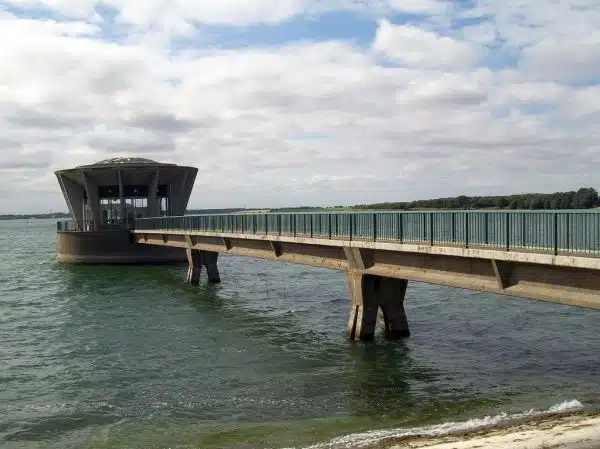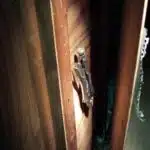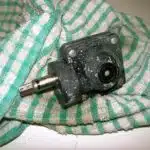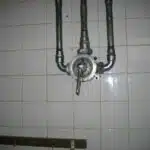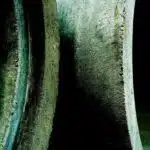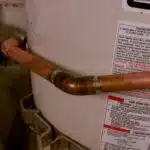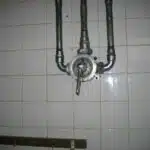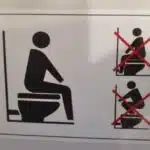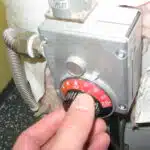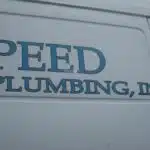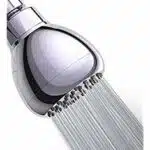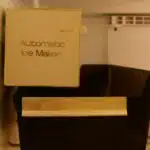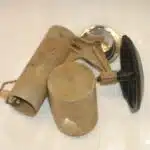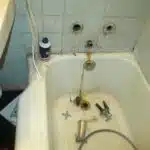Water is an essential element that contributes to the sustenance of human life. It is therefore necessary to have a reliable water supply in our homes. However, sometimes the plumbing system may fail, leading to leakages that can cause significant damage to property and pose health risks. In such cases, it’s crucial to know where your home’s main water shut-off valve is located so you can turn off the water supply quickly.
As a plumbing expert, I understand the importance of knowing where your home’s main water shut-off valve is situated. This knowledge can save you from costly repairs and damages resulting from leaks. In this article, I will guide you on how to locate your home’s main water shut-off valve and provide some practical tips on how to maintain it for optimal performance. With this information at hand, you can be confident in taking charge of your home’s plumbing system and preventing potential catastrophes.
Understanding The Importance Of Your Home’s Water Shut-Off Valve
Water is the source of life, and it flows through every corner of your home. It is essential to understand the importance of your home’s water shut-off valve as it can help prevent potential disasters such as flooding, water damage, and costly repairs. Regular maintenance of your plumbing system is crucial in keeping your home safe and secure.
The water shut-off valve acts as a gatekeeper, controlling the flow of water into your home’s plumbing systems. In case of an emergency such as a burst pipe or a faulty appliance, shutting off the main valve immediately can prevent further damage. DIY plumbing repairs may seem like a viable option for some homeowners; however, without proper training or experience, they can cause more harm than good.
It’s important to be aware that even minor leaks can have significant consequences if left unnoticed or untreated. Water damage not only affects the structure of your home but also poses health risks to you and your family. In the following section, we will discuss what can happen in case of a water leak and how to find your home’s main water shut-off valve.
What Can Happen In Case Of A Water Leak?
When a water leak occurs, it can cause significant damage to your home if left unchecked. One of the first signs of a leak is a decrease in water pressure. Checking your water pressure regularly can help you identify any potential leaks before they cause damage. If you notice a sudden drop in pressure, it’s important to investigate the source immediately.
Water damage can be difficult to detect, especially if it’s happening behind walls or under floors. Signs of water damage include discoloration or staining on walls or ceilings, musty odors, and warped or buckled flooring. If you suspect a leak but cannot locate the source, it’s best to call in a professional plumber who has specialized equipment to detect leaks without causing additional damage.
In order to prevent further damage in case of a water leak, it’s important to know how to shut off your main water supply. There are several types of shut-off valves available, each with its own unique features and benefits. In the next section, we’ll explore the different types of shut-off valves so you can identify which one you have and how to properly use it in case of an emergency.
Types Of Water Shut-Off Valves: Which One Do You Have?
Knowing what can happen in case of a water leak highlights the importance of being able to quickly shut off your home’s water supply. The first step in this process is finding the location of your main water shut-off valve. Different homes have different shut off valve locations, so it’s important to know where to look for yours.
Some common places to check for your main water shut-off valve include:
- Near the water meter
- In the basement or crawl space
- Outside near the foundation wall
If you’re having trouble locating your shut-off valve, don’t hesitate to call a professional plumber who can help you find it. Once you’ve located your shut-off valve, it’s important to make sure it works properly. If you have an older valve that doesn’t turn easily or leaks when turned, consider replacing it with a newer model.
There are several shut off valve replacement options available, including ball valves and gate valves. Ball valves are typically easier to turn on and off and are less likely to leak than gate valves. However, gate valves are often less expensive and may be more appropriate for some applications. Ultimately, choosing the right replacement valve depends on your specific needs and budget. By knowing where to find your main water shut-off valve and how to replace it if necessary, you can take proactive steps towards preventing potentially costly water damage in your home.
As a plumbing expert, I cannot stress enough how important it is for homeowners to know where their main water shut-off valve is located. This simple knowledge can save countless dollars and headaches in case of an unexpected leak or burst pipe. Take the time today to locate your main water shut-off valve and ensure that it works properly. And remember, if you need assistance with finding or replacing your shut-off valve, don’t hesitate to call a professional plumber who can help guide you through the process.
The Main Water Shut-Off Valve: Where To Look?
As the saying goes, “an ounce of prevention is worth a pound of cure.” This adage applies to plumbing as well. Knowing where your home’s main water shut-off valve is located can save you time, money, and headaches in case of a plumbing emergency. The main water shut-off valve controls the flow of water into your home, and it is imperative to locate it as soon as possible.
Common locations for a main water shut-off valve include the basement or crawl space, near the front foundation wall of the house, or where the water supply line enters your home. In some cases, it might be hidden behind an access panel, drywall or insulation. If you have trouble locating the valve in these areas, check with local plumbers who can provide information about specific neighborhoods or homes.
Checking for hidden valves may require more advanced techniques like using a stud finder to locate pipes behind drywall or insulation. You may also need to enlist the services of a licensed plumber that has experience in finding hard-to-locate valves. Keep in mind that shutting off your home’s main water supply should only be done when necessary and with caution because turning off valves incorrectly can lead to further damage or injury.
With these common locations and tips for finding hidden valves in mind, you are now one step closer to ensuring that you know where your home’s main water shut-off valve is located so that you can take action quickly in case of emergencies such as burst pipes or leaking fixtures. In the subsequent section, we will discuss how to find the shut-off valve in your basement – an essential location for many homes’ plumbing systems.
Finding The Shut-Off Valve In Your Basement
Once you have exhausted all possible locations inside your home, it is time to search for the main water shut-off valve in your basement. This can be a tricky task as most basements are cluttered with various utilities and pipes. However, it is crucial to locate this valve as it will allow you to turn off the water supply to your entire house in case of an emergency.
Common locations for the main shut-off valve in basements include near the front wall of the home or where the water line enters the basement. Look for a large brass or copper valve with either a wheel or lever handle. If you cannot find it in these areas, check near the hot water heater or furnace as sometimes plumbers will install them there for convenience.
If you are unable to locate the main shut-off valve in your basement, there are alternative options you can try. Look outside near where the water line enters your home, as some homes may have an outdoor shut-off valve. Additionally, check with your local water company or city hall as they may have records indicating where your main shut-off valve is located.
Numeric List:
Here are four items that can help you identify the main shut-off valve in your basement:
- Look for a large brass or copper valve
- Check near the front wall of your home
- Examine areas where pipework is concentrated
- Don’t forget to look near other utilities like hot water heaters and furnaces
By following these steps and using common sense, you should be able to locate your home’s main shut-off valve even if it’s somewhere unexpected or hard-to-reach.
Transition:
Now that we’ve covered finding the main shut-off valve in your basement let’s move on to identifying the shut-off valve outside of your home which can also play a critical role in emergencies when shutting off access from outside becomes necessary.
Identifying The Shut-Off Valve Outside Your Home
Now that you have checked inside your home for the main water shut-off valve and it is not found, the next step is to look for it outside your home. The shut-off valve outside your home is typically located near the street or sidewalk where your property meets the city’s water supply system. Some homes may also have a secondary shut-off valve near a hose bib or utility area.
Common locations for the shut-off valve outside your home include:
- In a covered box in the ground marked “water.”
- Near an outdoor faucet.
- On an exterior basement wall.
- Underneath a crawl space.
It is important to note that locating the main water shut-off valve outside your home may be difficult, especially if it is buried underground or hidden behind landscaping. If you are unable to locate it, consider contacting a professional plumber to assist you.
Tips for winterization: It is recommended that you locate and turn off your main water shut-off valve during winter months to prevent frozen pipes and potential water damage. Additionally, ensure that all outdoor hoses are disconnected from faucets and stored away properly to prevent any residual water from causing damage due to freezing temperatures.
Transitioning into how to shut off the water supply: Now that you have identified the location of your main water shut-off valve, it’s important to understand how to properly turn off the water supply in case of an emergency or maintenance needs.
How To Shut Off The Water Supply
The first step in shutting off the water supply is to identify the main shut-off valve. Generally, this valve is located near the point of entry for the water line, such as outside a home or near the water heater. Once the shut-off valve is identified, it should be turned off by turning the valve handle clockwise until it stops. This will stop the flow of water to the home and should be done in an emergency situation. Finally, the valve should be opened by turning the handle counter-clockwise until the line is fully opened.
Identifying The Shut-Off Valve
When it comes to shutting off your home’s water supply, identifying the shut-off valve is crucial. This valve is responsible for controlling the flow of water into your home and can be found in various locations depending on the type of house you have. To locate the main shut-off valve, there are several techniques you can use.
Firstly, check near the perimeter of your property as this is where the water meter box is usually located. The main shut-off valve is often found nearby or inside this box. Another common location to look for the valve is where the water supply enters your home. Check basements, crawl spaces, and utility rooms for a lever or wheel that controls water flow. If you are still having trouble finding it, try consulting a blueprint of your home’s plumbing system.
One of the most common mistakes people make when trying to identify their main shut-off valve is assuming that all valves within their home control the entire water supply. This is not true as there may be individual valves that control specific areas like outdoor spigots or appliances such as washing machines. Therefore, it’s important to follow these locating techniques and only shut off the main valve in case of emergencies. By knowing where your main shut-off valve is located and how to properly use it, you can prevent costly damages caused by unexpected leaks or bursts in your plumbing system.
Turning Off The Water Supply
As a plumbing expert, it is essential to understand how to turn off the water supply in case of emergencies. The importance of quick action cannot be overstated when it comes to preventing potential water damage that could cost you thousands of dollars. Turning off the water supply is one of the most effective ways to prevent further harm from a burst pipe or leak.
To turn off the water supply, locate the main shut-off valve and turn it clockwise until it stops moving. In some homes, this valve may be located near the perimeter of your property in a meter box or where the water enters your home. Once you have turned off the main valve, open all faucets in your home to drain any remaining water in your pipes.
It’s crucial to note that if you are unable to identify or turn off the main shut-off valve, seek professional assistance immediately. Delaying necessary repairs can lead to significant water damage and pose health risks due to mold growth. As a responsible homeowner, knowing how to quickly turn off your home’s water supply can help prevent costly damages and ensure that your plumbing system remains in good condition for years to come.
Tools You’ll Need To Turn Off The Water
As a plumbing expert, I understand the importance of having the right tools when turning off the main water shut off valve in your home. Before you embark on this task, it’s essential to have a few basic tools at hand. These include an adjustable wrench or pliers, a bucket or towels to catch any drips, and a flashlight if your valve is located in a dark area.
Common mistakes that people make when attempting to turn off their main water supply include using too much force or turning the wrong valve. This can lead to broken valves or other problems down the line. To avoid these issues, always turn the valve clockwise gently until it stops moving. If you’re unsure which valve controls your main water supply, consult your home’s blueprints or ask a professional for assistance.
Safety precautions should also be taken when turning off your home’s main water supply. Always turn off any appliances that use water before shutting off the valve, and never attempt to turn it back on without first consulting a professional plumber. Additionally, be sure to wear gloves and protective eyewear in case of any leaks or spills.
Alternative shut-off methods such as individual fixture shut-offs or external meter shut-offs may also be available in some homes. While these can be useful in emergencies, they may not provide complete isolation of your home’s water supply and can still result in leaks or damage over time. It’s important to weigh the pros and cons of each method before deciding which one is best for your situation.
As you now have some knowledge about how to turn off your home’s main water supply safely and effectively, let’s move onto maintenance tips for your shut-off valve.
Maintenance Tips For Your Shut-Off Valve
When it comes to your home’s plumbing system, your main water shut-off valve is one of the most important components. It serves as a control point for the flow of water into your home and can be used to stop the supply of water in case of an emergency or repair work. Checking accessibility and testing functionality is crucial to ensure that you can quickly and easily turn off the water supply when needed.
Firstly, locate your main water shut-off valve, which is typically found outside of your home. Look for a metal lid labeled ‘water’ or ‘main’ in front of your house or near the property line. If you live in an apartment building or condominium complex, ask the building manager or superintendent for assistance. Once located, make sure that it is easily accessible and not blocked by any objects.
Secondly, test the functionality of your shut-off valve by turning it off and on again. This will give you a good idea of how well it works and whether it needs any repairs or replacements. It’s also essential to test its functionality periodically to make sure that it hasn’t become stiff due to lack of use. A faulty shut-off valve can lead to serious problems such as flooding and water damage.
Maintaining your main water shut-off valve should be a part of every homeowner’s regular plumbing maintenance routine. By checking accessibility and testing functionality twice per year, you can ensure that this critical component is working correctly at all times. In the next section, we will discuss signs of a faulty shut-off valve that may indicate that repair or replacement is necessary.
Signs Of A Faulty Shut-Off Valve
Maintenance Tips for Your Shut-Off Valve have been discussed in the previous section. It is important to know how to find your home’s main water shut off valve, especially in emergency situations. Checking accessibility is key to locating your shut-off valve.
The location of your shut-off valve may vary depending on the age and type of your home. In newer homes, it is usually located inside near the front foundation wall or in the garage. In older homes, it may be outside near the street or sidewalk. If you are having trouble finding it, check with your local water company or a licensed plumber.
In some cases, you may need to troubleshoot your shut-off valve as part of DIY maintenance. Signs of a Faulty Shut-Off Valve include leaks around the valve stem or difficulty turning it off completely. If you notice any of these signs, it is best to call a professional plumber to repair or replace the valve.
If you cannot locate your shut-off valve or if it is not working properly, do not panic. There are steps you can take to minimize damage and prevent flooding until help arrives. These steps will be discussed further in the next section about what to do if you can’t find the shut-off valve.
What To Do If You Can’t Find The Shut-Off Valve
If you are unable to locate the main water shut-off valve in your home, it can be a frustrating experience. However, there are a few things you can try before calling in a professional plumber. First, check the perimeter of your home where the water meter is located. The shut-off valve may be close by and could be buried underground or behind bushes. If this doesn’t work, try checking with your neighbors to see if they have any knowledge about where the valve might be located.
If you still cannot find the shut-off valve after trying these steps, it may be time to call in a professional plumber. A plumber will have specialized equipment that can detect where the valve is located without causing any damage to your property. While it may seem like an unnecessary expense at first, hiring a plumber can save you money in the long run by preventing any further damage caused by water leaks.
In the meantime, there are some temporary solutions you can try to minimize potential damage from leaks. Turn off individual valves under sinks and toilets to stop water flow to those specific areas. You can also shut off the main supply of water coming into your property from outside by turning off the valve at the water meter. Keep in mind that these solutions are only temporary and should not replace finding and fixing the main shut-off valve as soon as possible.
Moving forward, it’s important to keep in mind that finding your home’s main water shut-off valve is crucial for preventing serious damage from leaks or other plumbing issues. If you are unable to locate it on your own, don’t hesitate to call in a professional plumber for assistance. In the next section, we’ll discuss when it’s appropriate to call in a plumber and what signs indicate that you need their help.
When To Call A Professional Plumber
While finding your home’s main water shut off valve is an important task for any homeowner, there may be times when you need to call in a professional plumber. If you notice signs of a faulty shut off valve such as low water pressure or leaks around the valve, it is important to address these issues promptly. Attempting to fix these problems on your own can lead to further damage and potentially costly repairs.
One reason to call in a professional plumber is if you are unsure about the location or operation of your home’s main water shut off valve. A licensed plumber can inspect your plumbing system and provide guidance on how to properly shut off your water supply in the event of an emergency. Additionally, if you have an older home with outdated plumbing systems, it may be necessary to replace parts or install new valves to ensure proper functioning.
Another situation where you should consider calling a professional plumber is if you experience persistent leaks or other issues with your plumbing system. Leaks can cause significant damage over time and increase your water bill, so it is important to address them as soon as possible. A skilled plumber can identify the source of the leak and provide repair options that fit within your budget and long-term goals.
Signs that indicate it’s time to call a plumber:
Low water pressure
Unusual sounds coming from pipes
Foul odors from drains
Benefits of hiring a professional plumber:
Experience and expertise in fixing complex plumbing issues
Proper tools and equipment for efficient repairs
Access to high-quality replacement parts
Tips for selecting the right plumber:
Look for licensing and insurance credentials
Check online reviews and ratings
Get multiple quotes before making a decision
In summary, while finding your home’s main water shut off valve is an essential step in maintaining your plumbing system, there are situations where calling in a professional plumber is necessary. Signs of a faulty shut off valve, persistent leaks, and outdated plumbing systems are all reasons to consider hiring a licensed plumber. By following the tips for selecting the right plumber and being proactive in addressing plumbing issues, homeowners can avoid costly repairs and prevent water damage in their homes. In the next section, we will discuss preventative measures homeowners can take to stop water leaks before they start.
Preventing Water Leaks: Tips For Homeowners
Water leak detection is crucial for homeowners to prevent extensive damage and costly repairs. A minor leak can quickly turn into a major problem if left unattended. Regularly checking pipes, faucets, and appliances for visible leaks or signs of moisture is essential in detecting early warning signs of a potential water leak.
DIY plumbing repairs can be tempting for homeowners looking to save money on maintenance costs. However, it is important to know your limits when it comes to plumbing repairs. Attempting complex repairs without the proper knowledge and tools can result in further damage or even injury. It’s always best to consult with a professional plumber for any repair needs beyond basic maintenance tasks.
Regular plumbing maintenance should not be overlooked by homeowners as it can ultimately save money in the long run. Scheduling routine inspections from a licensed plumber can identify minor issues before they turn into major problems. Furthermore, preventative measures such as cleaning drains and keeping pipes free of debris can extend the lifespan of your plumbing system while also reducing the risk of costly repairs down the line.
Importance Of Regular Plumbing Maintenance
Regular inspections are crucial for keeping your plumbing system in top-notch condition. Even if you perform DIY plumbing maintenance regularly, there may be underlying issues that only a professional plumber can identify. Regular inspections can help catch these problems before they escalate into costly repairs or replacements.
DIY plumbing maintenance is an excellent way to keep your plumbing system running smoothly. However, it’s essential to know when a problem is beyond your skill level and requires the assistance of a professional plumber. Some tasks, such as fixing leaks or unclogging drains, can be done by homeowners but must be performed correctly to avoid causing more damage.
Regular maintenance not only helps prevent costly repairs but also prolongs the life of your plumbing system. It’s always better to address small issues before they turn into significant problems down the road. By investing in regular inspections and performing DIY maintenance tasks, you are taking control of your home’s plumbing system and ensuring its longevity for years to come.
Transition: Now that we’ve covered the importance of regular plumbing maintenance let’s move on to how taking control of your home’s plumbing system can save you money in the long run. In the next section, we will discuss some practical tips for maintaining a healthy and efficient plumbing system.
Conclusion: Take Control Of Your Home’s Plumbing System
Regular plumbing maintenance is crucial for ensuring that your home’s plumbing system stays in top condition. It helps to prevent leaks, clogs, and other issues that can lead to costly repairs down the line. By scheduling regular maintenance checks with a professional plumber, you can catch small problems before they turn into major headaches.
However, even with regular maintenance, it’s important to be prepared for emergencies. DIY troubleshooting can help you address minor issues on your own, but knowing how to find your home’s main water shut off valve is essential in case of a plumbing emergency. The main shut off valve controls all the water in your home and can stop the flow of water if there is a leak or burst pipe.
To locate your main shut off valve, start by checking near your water meter or where the main water supply enters your home. It may also be located near your hot water heater or inside a utility closet. Once you’ve found it, make sure everyone in your household knows where it is and how to turn it off in an emergency. Being prepared can save you time, money, and stress in the event of a plumbing emergency.
| Troubleshooting Tips | Emergency Preparedness |
|---|---|
| Check for leaks regularly | Know where your main shut off valve is located |
| Use drain covers to prevent clogs | Have a basic toolkit on hand for DIY repairs |
| Don’t pour grease down drains | Keep emergency contact information for plumbers handy |
In conclusion, taking control of your home’s plumbing system requires both regular maintenance and emergency preparedness. By scheduling routine check-ups with a professional plumber and learning how to troubleshoot minor issues on your own, you can avoid costly repairs down the line. Additionally, knowing the location of your main water shut off valve and having basic repair tools on hand can help you handle unexpected emergencies quickly and efficiently without unnecessary stress or expense.
Conclusion
Understanding the importance of your home’s water shut-off valve is crucial for every homeowner. A water leak can cause significant damage to your property, leading to costly repairs and even health hazards. Therefore, it is essential to know the types of water shut-off valves and where to find them in case of an emergency.
The main water shut-off valve is typically located near the water meter or where the main water supply enters your home. It is crucial to locate this valve before an emergency occurs. If you cannot find it or are unsure, do not hesitate to call a professional plumber who can help you locate it.
Preventing water leaks requires regular plumbing maintenance and a few simple tips for homeowners. These include checking faucets, toilets, and appliances regularly for leaks, insulating pipes during cold weather, and avoiding pouring grease down drains. By taking control of your home’s plumbing system and understanding the importance of regular maintenance, you can prevent potential disasters and keep your home safe.
In conclusion, as a plumbing expert, I urge homeowners to take their plumbing seriously by locating their main water shut-off valve, performing regular maintenance checks, and calling a professional plumber when necessary. Remember that prevention is always better than cure when it comes to plumbing emergencies. By taking proactive measures to prevent water leaks in your home, you are protecting yourself from costly expenses and ensuring that your family remains safe from potential dangers.
Image Credits
- “Grafham Water’s valve tower” by Peter O’Connor aka anemoneprojectors (featured)

